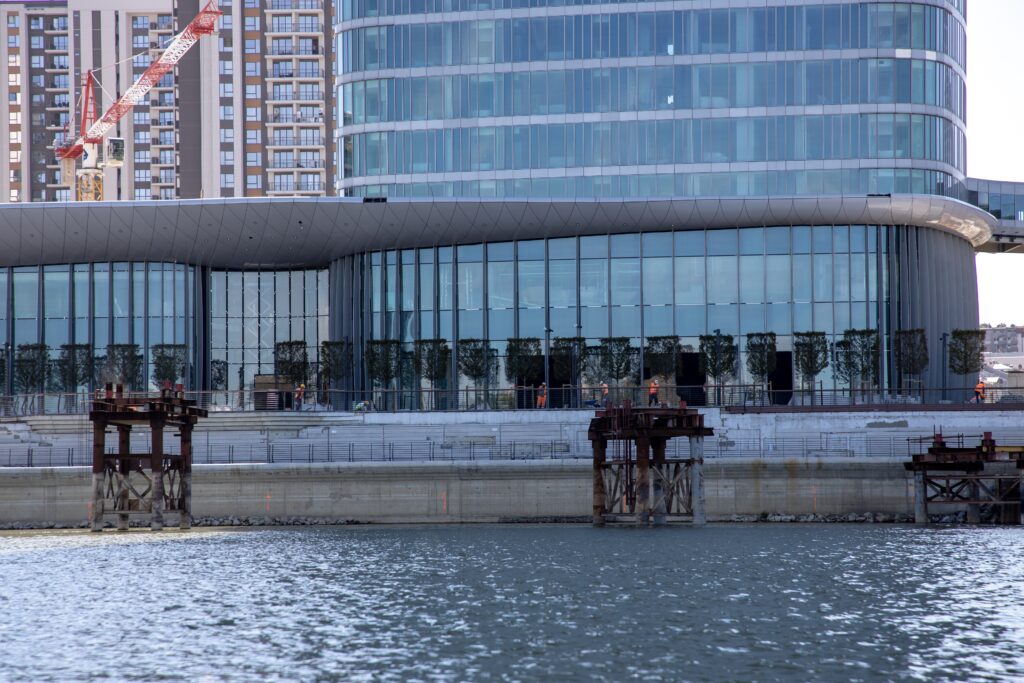In the modern era, the construction industry stands at the nexus of technological innovation, growing urbanization, and environmental consciousness. As construction practices evolve, so do the inherent risks.
Balancing economic growth, sustainability goals, and safety concerns is no small feat. This article delves into the multifaceted landscape of risk in modern-day construction, exploring the challenges faced and the strategies employed to mitigate these risks.
1. Evolving Project Complexity
One of the defining characteristics of contemporary construction projects is their increasing complexity. As architectural designs become more intricate and client expectations rise, the margin for error narrows. Complex structures demand precise coordination among various stakeholders, which in turn amplifies the risk of miscommunication, delays, and cost overruns.
2. Technological Advancements and Digital Risks
The integration of Building Information Modeling (BIM), Internet of Things (IoT), and automation technologies has revolutionized construction. Yet, these technological leaps also introduce new vulnerabilities. Cybersecurity threats can compromise sensitive project data, leading to unauthorized access, data breaches, and project disruptions. Ensuring robust digital security measures is now imperative.
3. Supply Chain Disruptions
Globalization has expanded construction supply chains, increasing their susceptibility to disruptions. Natural disasters, geopolitical tensions, and the ongoing impact of the COVID-19 pandemic have all highlighted the fragility of these networks. Delays in material procurement can lead to project schedule slippages and budget overruns.
4. Sustainability and Environmental Risks
The push for sustainable construction practices is reshaping the industry. While sustainable choices contribute to a greener future, they also introduce novel risks. Materials with limited track records may underperform, and navigating the complex landscape of green certifications requires a nuanced understanding. Moreover, unexpected environmental factors, such as extreme weather events, can impact both construction processes and long-term building performance.
5. Regulatory Compliance and Legal Risks
Adhering to an ever-evolving web of regulations presents a constant challenge. Failure to meet compliance standards can result in costly fines and legal battles. In addition, liability concerns loom large, especially in instances of construction defects or accidents on-site. Robust legal strategies, comprehensive insurance coverage, and stringent quality control are paramount.
6. Labor Shortages and Skill Gaps
The construction industry faces a persistent shortage of skilled labor. As seasoned professionals retire, there’s a dearth of younger workers with the necessary expertise to fill the gap. This scarcity can lead to decreased productivity, errors, and an elevated risk of accidents. Investing in workforce development, training, and retention programs is essential for managing this risk.
7. Financial Uncertainties
Financial risk has long been a cornerstone of construction projects. Fluctuating material costs, interest rates, and market volatility can impact budgets and project feasibility. Effective risk management involves robust financial planning, accurate cost estimation, and contingency funds to cushion against unexpected financial shocks.
8. Natural and Man-Made Hazards
Construction sites are susceptible to a range of natural and man-made hazards, from earthquakes and hurricanes to accidents involving heavy machinery. Implementing comprehensive safety protocols, conducting thorough site assessments, and providing ongoing safety training are crucial measures to mitigate these risks.
Mitigation Strategies
- Comprehensive Risk Assessments: Conduct thorough risk assessments at project inception to identify potential challenges and devise appropriate mitigation strategies.
- Effective Communication: Open and transparent communication among all stakeholders minimizes misunderstandings, enhances collaboration, and reduces the risk of errors.
- Technological Integration and Security: Embrace technological advancements while prioritizing cybersecurity measures to safeguard sensitive project data.
- Diversified Supply Chains: Establish backup suppliers and contingency plans to mitigate the impact of supply chain disruptions.
- Sustainable Practices: Adopt proven sustainable materials and practices, and conduct thorough research before integrating new green technologies.
- Legal Expertise: Consult legal experts to ensure compliance with regulations, solid contract drafting, and effective dispute resolution strategies.
- Workforce Development: Invest in training, mentorship, and attractive benefits to attract and retain skilled labor.
- Robust Financial Planning: Develop detailed budgets, consider various financial scenarios, and maintain contingency reserves.
- Safety Culture: Instill a strong safety culture on-site through regular training, strict adherence to protocols, and the use of advanced safety technologies.
Conclusion
Modern-day construction is a dynamic field that marries innovation with tradition, promising remarkable structures while posing unique challenges. Effectively navigating these risks requires a multidimensional approach that prioritizes collaboration, technological integration, sustainability, safety, and adaptive risk management. By recognizing the ever-evolving landscape of construction risk, stakeholders can work together to build a more resilient and secure future.
To see other material construction prices, please see here.
To know other construction guides, tips, and methodology for beginners, veterans, and contractors, please see here.

